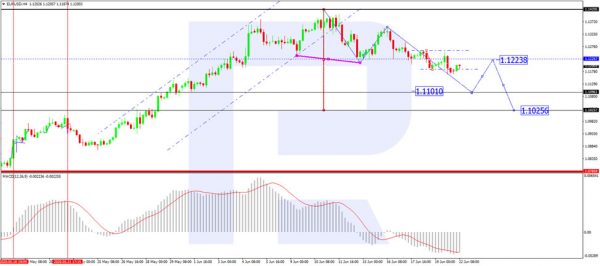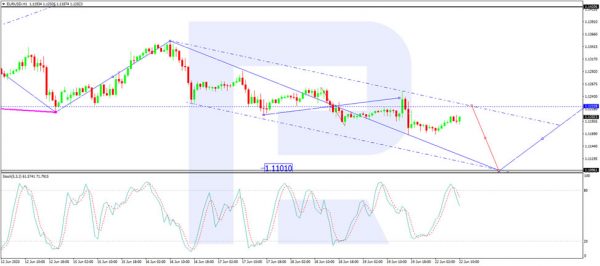Early in another week of June, EUR/USD is slightly correcting, which is quite logical after several “negative” trading sessions in a row. On Monday morning, the major currency pair is trading at 1.1200.
Moody’s kept the long-term rating of the USA at AAA “stable” and said that the US economic security was self-explanatory, while the USD was and would be the strongest global currency. This statement should have supported the American currency but it didn’t happen.
However, it appears that market players are still in the mood for risks, that’s why their interest in the USD as a “safe haven” asset is rather low.
In addition to that, investors were very closely watching the press conference by the US Fed Chairman Jerome Powell, who said the American economy would undoubtedly recover but it would take much time. However, markets don’t like to wait, that’s why his words are counting against the USD.
As we can see in the H4 chart, EUR/USD is moving inside the descending channel. It should be noted that earlier the pair broke 1.1222 and formed a downside continuation pattern. At the moment, the price is trying to correct and return to 1.1222. After that, the instrument may fall to reach the target of the third descending wave at 1.1100. Later, the market may correct to test 1.1222 from below and then resume trading downwards to reach 1.1000. From the technical point of view, this scenario is confirmed by MACD Oscillator: its signal line is falling under 0 in the histogram area. After the price reaches 1.1100, the line may leave the area and grow towards 0.
In the H1 chart, EUR/USD is correcting towards 1.1222 and may later fall to reach 1.1170, thus forming a new consolidation range between these two levels. If later the price breaks 1.1170 to the downside, the market may resume the downtrend with the short-term target at 1.1100. From the technical point of view, this scenario is confirmed by Stochastic Oscillator: its signal line is moving above 80, thus implying completion of the correction and further decline towards 50 or even 20. After the line breaks 50, the price chart may boost its decline.















